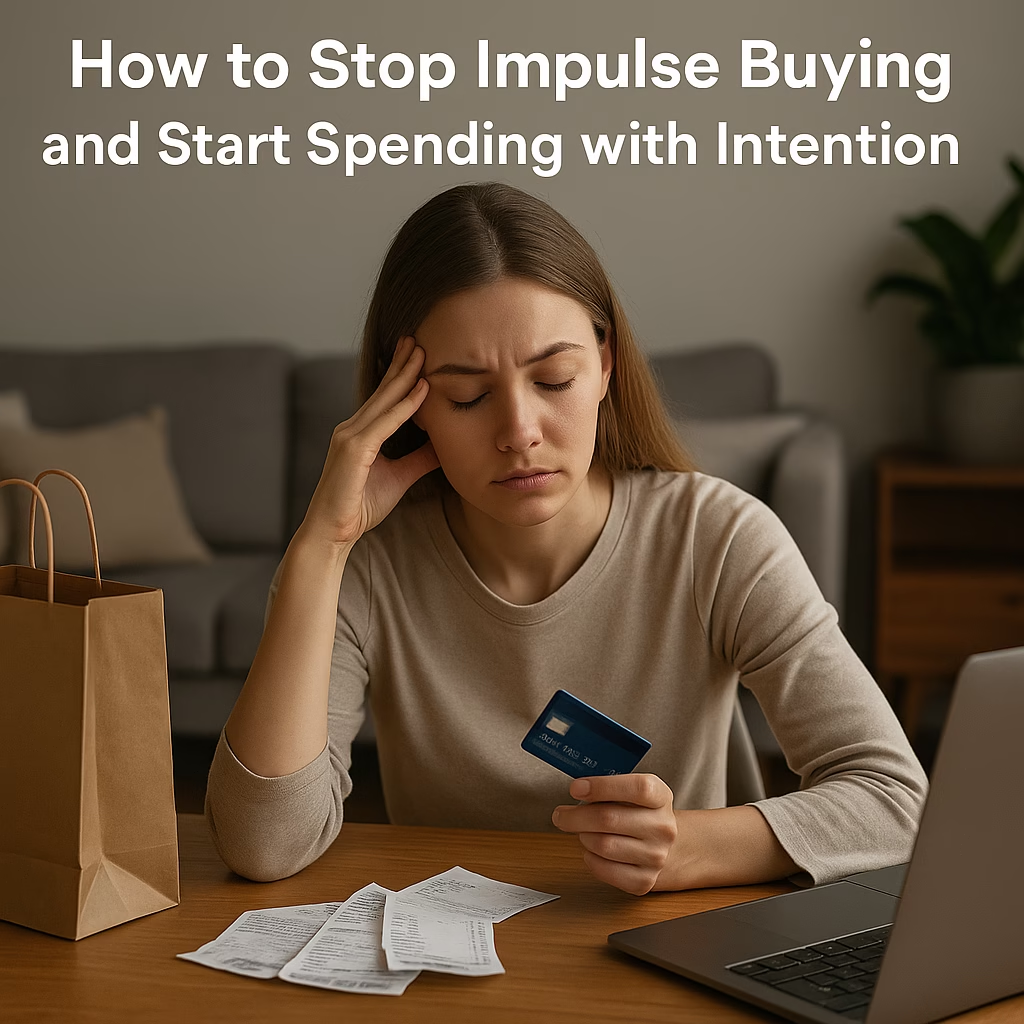Ever gone shopping for “just one thing” and left with a cart full of items you didn’t plan to buy? You’re not alone. Impulse buying is a modern habit fueled by marketing, emotional triggers, and the constant availability of products.
But there’s a better way. This article will teach you how to recognize the triggers of impulse buying and replace them with mindful, intentional spending habits—so your money supports your values, not just your urges.
What Is Impulse Buying?
Impulse buying is when you make unplanned purchases based on emotion or convenience, rather than actual need or intention. Common examples include:
-
Grabbing snacks near the checkout
-
Buying clothes on sale “just in case”
-
Ordering gadgets during online sales
-
Making late-night purchases while scrolling
These small decisions add up—financially, emotionally, and environmentally.
The Psychology Behind Impulse Buying
Understanding why you impulse buy is the first step to breaking the habit. Some common triggers include:
-
Emotional comfort: Shopping to cope with stress, boredom, or sadness
-
Social pressure: Buying to impress or fit in
-
Scarcity tactics: “Limited time only!” messages create urgency
-
Habits and environment: Always browsing sales or keeping shopping apps installed
Recognizing these triggers is crucial for changing your behavior.
Step 1: Identify Your Spending Patterns
Track your purchases for one month. Ask:
-
Was this planned or impulsive?
-
What emotion was I feeling at the time?
-
Did I actually use or enjoy this item?
Awareness turns unconscious habits into conscious choices.
Step 2: Unsubscribe and Unfollow
Your digital environment often fuels impulse buying. Take control by:
-
Unsubscribing from marketing emails
-
Unfollowing brands that encourage excessive consumption
-
Turning off app notifications for sales or deals
Less exposure = fewer temptations.
Step 3: Create a 48-Hour Rule
Before buying anything non-essential, wait 48 hours. Ask yourself:
-
Do I still want this after two days?
-
Is this a want or a need?
-
Will I use and value this in the long run?
Delaying gratification reduces emotional decisions and increases clarity.
Step 4: Use a Budget That Reflects Your Values
A minimalist budget doesn’t just track expenses—it reflects your priorities. Try:
-
A “values-based” budget: allocate money to things that bring joy, growth, or peace
-
A “fun fund”: set a limit for spontaneous spending
-
Cash-only shopping for categories you overspend in
Money spent intentionally is money spent well.
Step 5: Simplify Your Shopping Environment
Make impulse buying harder by redesigning your habits:
-
Remove stored credit card info from online shops
-
Avoid browsing without a list
-
Use a shopping cart (digital or physical) but don’t check out immediately
-
Keep a “wish list” instead of buying immediately
Disrupting the instant loop makes room for better decisions.
Step 6: Replace the Habit with Something Meaningful
Impulse buying often masks a deeper need. Instead of reaching for your wallet, try:
-
Taking a walk
-
Calling a friend
-
Journaling your feelings
-
Doing something creative or productive
Replace the urge with a habit that nourishes your mind or spirit.
Buy Less, Choose Better, Live Freer
Stopping impulse buying isn’t about self-denial. It’s about freedom—from clutter, debt, and emotional spending. When you spend with intention, you gain more than money. You gain:
-
Peace of mind
-
Financial control
-
Space to live your values
Minimalism begins at the checkout—and sometimes, by walking away from it.

